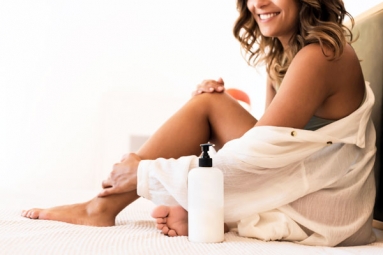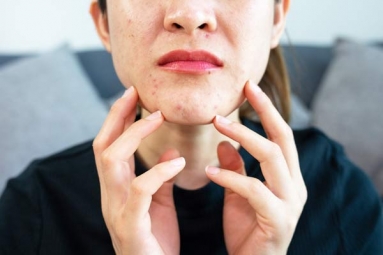
(Image source from: Canva.com)
If you're working to lose weight or trying to lose weight frequently, there may be specific body fat areas that you want to address most. Whether it's the beer belly you're trying to get rid of or the stubborn arm fat that's making you self-conscious about wearing sleeveless tops, we all have things that bother us. However, cheek fat is one of the hardest fats to lose. Buccal fat is a fatty mass under the cheeks that shapes the face and facilitates movement of facial muscles. This has made facial fat grafting one of the most popular cosmetic procedures across the world, including in India. Home workouts have grown in popularity during the pandemic, and “how to lose weight at home” videos are flooding social media. This has led to more and more influencers promoting easy-to-implement tips for losing weight at home. When it comes to cheek and facial fat, there has been a significant increase in fitness content with influencers showing people how to reduce facial fat through tools like massage, facial yoga and gua sha.
Soon, terms like “lymphatic drainage” and “facial cortisol” became the next buzzword for reducing facial fat, and experts began offering tips on how to get rid of those extra layers of fat on your face. Losing facial fat is not easy, but it can be achieved with a holistic approach. When you're trying to lose weight, fat loss occurs throughout your body, which can be achieved through diet and regular exercise. If you choose to reduce body fat through proper diet and exercise, you will also reduce facial fat and your body and face will look good as a result. I also run, cycle and do other aerobic exercises regularly. Such activities help burn fat, boost metabolism and reduce calories. Staying hydrated, limiting carbohydrate intake, and reducing excess sodium intake will reduce water retention and swelling. Facial yoga includes specific poses and pranayama techniques that apply gentle pressure to your face, helping you achieve a radiant and beautiful look without resorting to beauty treatments. To put it simply, exercise with a proper diet can help you lose weight. The choice of exercise is yours, and that includes yoga.
Massages and facial exercises are widely touted as beneficial ways to improve circulation, relieve tension, and create a healthy glow. However, if used incorrectly or excessively, they can cause side effects. Facial exercises can cause side effects if not done properly. Here is the list:
Increased wrinkling: When facial exercises involve repetitive or exaggerated movements, wrinkles can occur, especially in areas prone to fine lines, such as the eyes and mouth.
Headaches: Overworked facial muscles can lead to fatigue and tension, just like overuse of other muscles in the body. This can cause discomfort and, in some cases, tension headaches.
Jaw Pain: Exercises that involve jaw movements can cause jaw discomfort or worsen conditions such as temporomandibular joint disorder, which can cause pain and stiffness.
Skin Irritation: Excessive pulling or stretching of the skin during facial exercises can make the skin sensitive and cause skin irritation and redness, especially in people with sensitive or thin skin.
Facial Tools: From Kendall Jenner to Deepika Padukone, facial tools like gua sha and jade rollers are now a staple in many beauty enthusiasts' skincare routines.
The data shows the same thing. The global skin care devices market size is estimated at $14 billion in 2022 and is expected to reach $15.3 billion in 2023. These tools are often marketed as ways to reduce facial fat. However, experts believe that tools like Gua Sha only have a temporary effect and make your face look slimmer. A 2018 study that analyzed 50 women and asked them to use the Pao device showed that the device can increase the thickness and cross-sectional area of facial muscles and help facial rejuvenation.
However, Dr. Sharma points out that there is a lack of scientific evidence supporting the effectiveness of these tools. In addition, it can cause side effects such as: People with sensitive or acne-prone skin may experience burning, breakouts, or redness if this device is used too aggressively or inappropriately. Excessive pressure can cause damage to blood vessels, especially in people with thin or sensitive skin. If you suffer from conditions such as rosacea or eczema, using facial products can make these problems worse.






